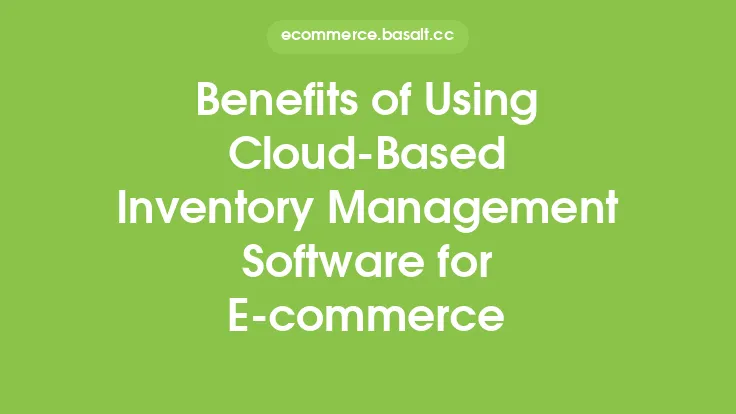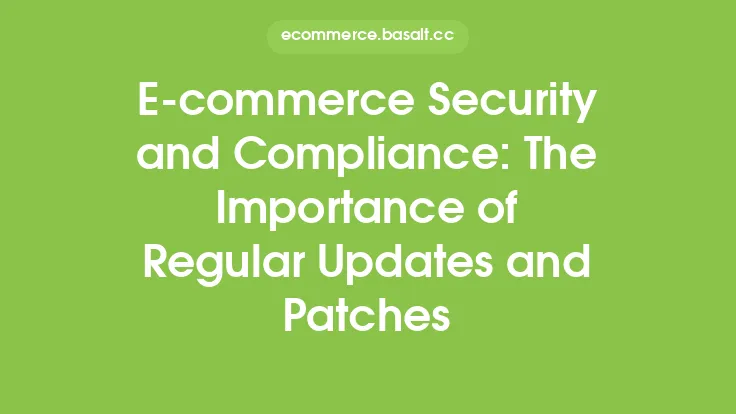Regular security audits are a crucial aspect of maintaining a secure e-commerce website. In today's digital age, online stores are constantly vulnerable to various types of cyber threats, including hacking, data breaches, and malware attacks. These threats can result in significant financial losses, damage to reputation, and legal liabilities. Conducting regular security audits can help identify and address potential vulnerabilities, ensuring the integrity and security of an e-commerce website.
Introduction to Security Audits
A security audit is a comprehensive evaluation of an e-commerce website's security posture, including its infrastructure, applications, and data. The primary goal of a security audit is to identify potential vulnerabilities and weaknesses that could be exploited by attackers. This is achieved by simulating various types of attacks, testing the website's defenses, and analyzing its security controls. Security audits can be performed manually or using automated tools, and they should be conducted regularly to ensure the website remains secure.
Benefits of Regular Security Audits
Regular security audits offer numerous benefits to e-commerce websites. One of the most significant advantages is the identification and remediation of potential vulnerabilities. By detecting weaknesses early, e-commerce websites can prevent attacks and reduce the risk of data breaches. Regular security audits also help ensure compliance with industry standards and regulations, such as PCI-DSS and GDPR. This is particularly important for e-commerce websites that handle sensitive customer data, including credit card information and personal identifiable information.
Types of Security Audits
There are several types of security audits that can be performed on e-commerce websites. Network security audits focus on the website's infrastructure, including its firewalls, routers, and servers. Application security audits evaluate the website's applications, including its shopping cart, payment gateway, and user authentication systems. Data security audits examine the website's data storage and handling practices, including its encryption, access controls, and backup procedures. Each type of audit provides valuable insights into the website's security posture and helps identify areas for improvement.
How to Conduct a Security Audit
Conducting a security audit involves several steps. The first step is to define the scope of the audit, including the systems, applications, and data to be evaluated. The next step is to gather information about the website's security controls, including its firewalls, intrusion detection systems, and access controls. The auditor then uses various tools and techniques to simulate attacks and test the website's defenses. This may include vulnerability scanning, penetration testing, and social engineering attacks. The auditor analyzes the results, identifies potential vulnerabilities, and provides recommendations for remediation.
Best Practices for Security Audits
To get the most out of security audits, e-commerce websites should follow best practices. One of the most important best practices is to conduct security audits regularly, ideally every 6-12 months. This helps ensure the website remains secure and compliant with industry standards. E-commerce websites should also use a combination of manual and automated testing tools to identify potential vulnerabilities. Additionally, security audits should be performed by qualified and experienced auditors who have expertise in e-commerce security. Finally, e-commerce websites should prioritize remediation efforts based on the severity of the vulnerabilities identified during the audit.
Common Security Audit Tools
There are several security audit tools available to e-commerce websites. Vulnerability scanners, such as Nessus and OpenVAS, can be used to identify potential vulnerabilities in the website's infrastructure and applications. Penetration testing tools, such as Metasploit and Burp Suite, can be used to simulate attacks and test the website's defenses. Compliance scanning tools, such as PCI-DSS scanners, can be used to ensure compliance with industry standards. Additionally, e-commerce websites can use security information and event management (SIEM) systems to monitor and analyze security-related data.
Conclusion
Regular security audits are essential for maintaining a secure e-commerce website. By identifying and addressing potential vulnerabilities, e-commerce websites can prevent attacks, reduce the risk of data breaches, and ensure compliance with industry standards. E-commerce websites should conduct security audits regularly, using a combination of manual and automated testing tools, and prioritize remediation efforts based on the severity of the vulnerabilities identified. By following best practices and using the right security audit tools, e-commerce websites can ensure the integrity and security of their online stores, protecting their customers and their business.





